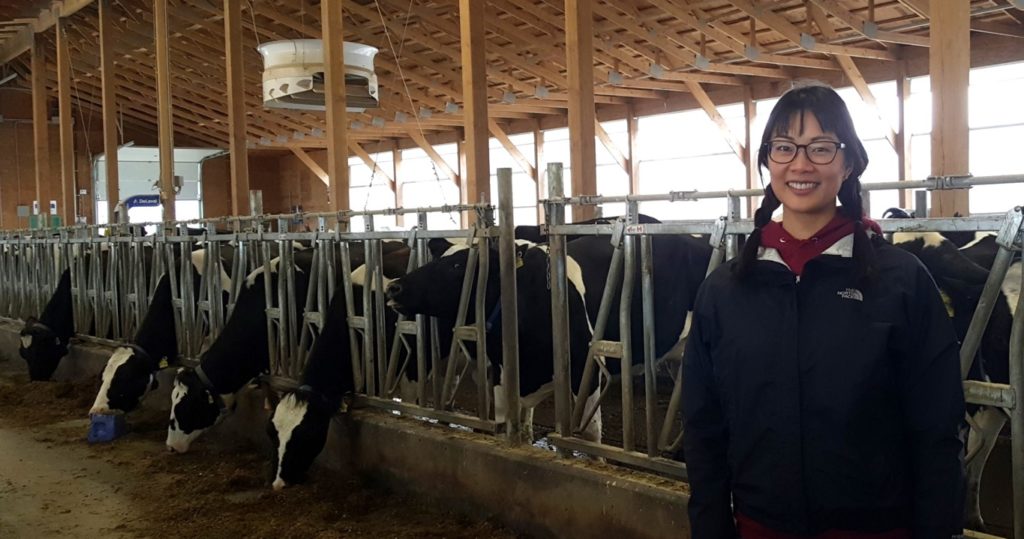
Dairy open houses in British Columbia
Last week was the 49th annual B.C. Dairy Expo, which included a Farm Tour. Nine local dairies in the Fraser Valley held open houses. This pdf brochure shows the list of farms and their features.
I managed to visit the 4 dairies in Abbotsford and the 2 in Deroche. What the participating farms had in common was a lot of investment in new infrastructure and technology. Some of the farms had the following:
– Robotic milkers: a stall that a cow enters voluntarily at a time of her chosing to get milked. The teat cups are attached by a machine using lasers for guidance, which was very cool to watch! This system is in contrast to traditional milking which happens on a schedule (typically 2-3 times a day) and is done with human labor to attach the milking machine.
– Rotary parlors: a carousel that a cow walks onto to get milked, and may or may not use robotic teat cup attachment. A rotary allows for improved efficiencies during milking such as reduced walking for both cows and workers. Cows enter individually and exit when each is done being milked, instead of as a group, where the slowest-milking cow determines how long it takes to finish each set.
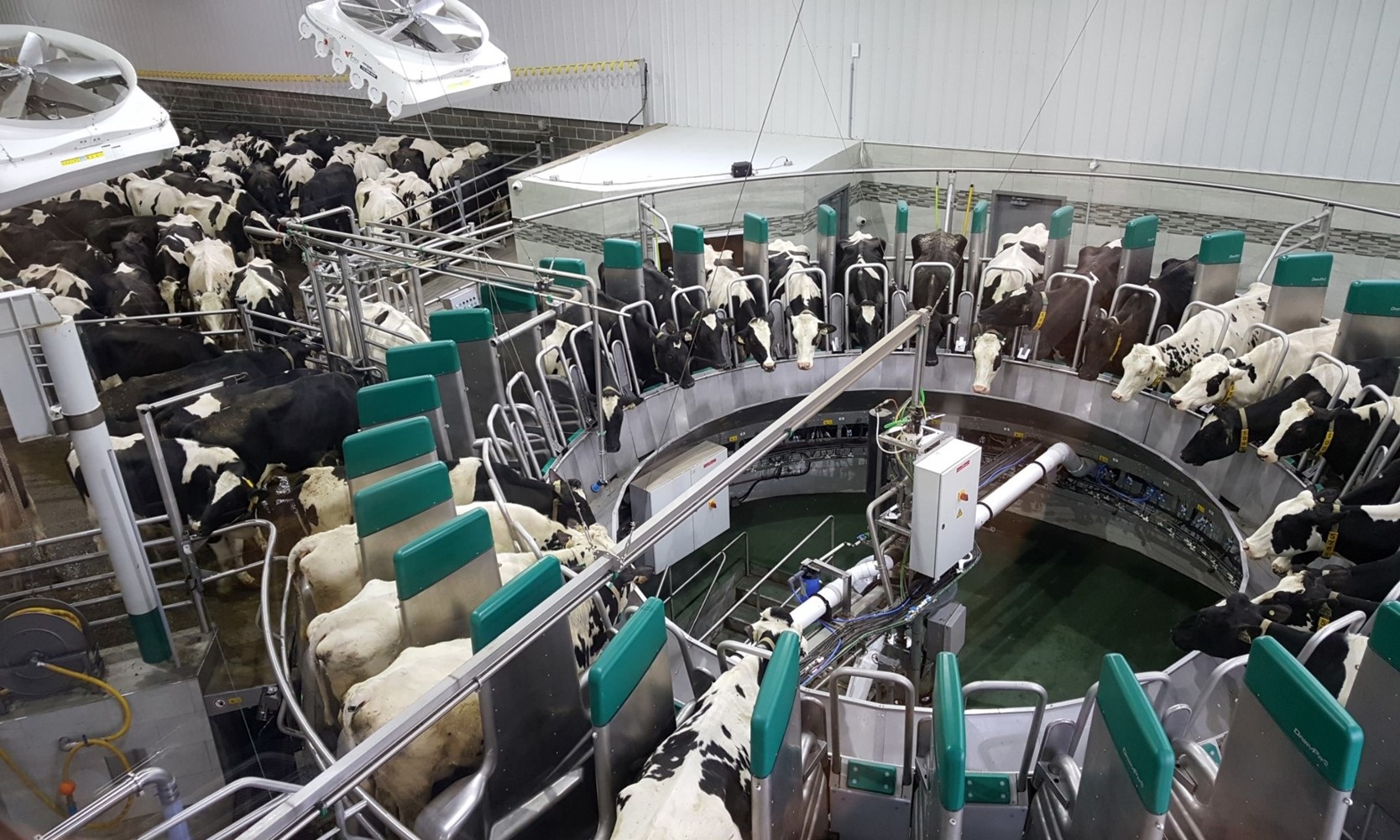
– Automatic feed pushers and self-driving feeders: These robots look kind of like big Roomba vacuums! The self-driving feeders like the Lely Vector both deliver fresh feed and also push the feed closer to the cows so they can reach it. The automatic feed pushers like the Lely Juno just do the latter. We even saw one robot deftly navigate around the table where coffee and donuts were being served.
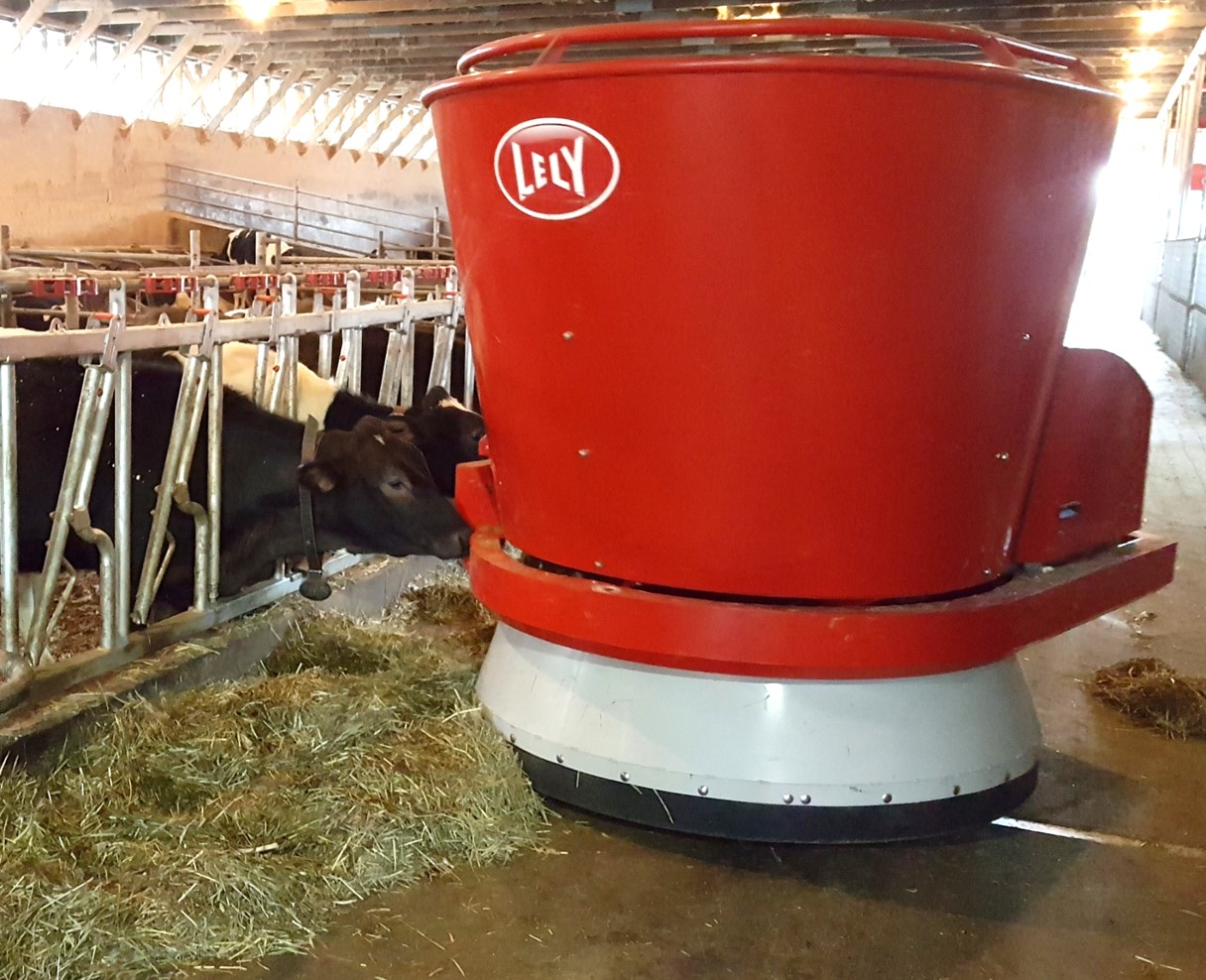
Many of the farms had entirely new barns or new freestalls for the cows. Deep sand was the most popular bedding type, and this was great to see because research has shown that cows prefer lying down on this material.
We did observe a few potential animal welfare issues on some farms, such as cows lying in the concrete alley instead of in their stalls, heifers standing in stagnant water, and a few docked tails.
However, we also saw some management decisions that are promising for improving animal welfare. Most farms had fans to reduce heat stress in the summer, and many also offered environmental enrichment for the heifers and adult cows in the form of automatic rotating brushes.
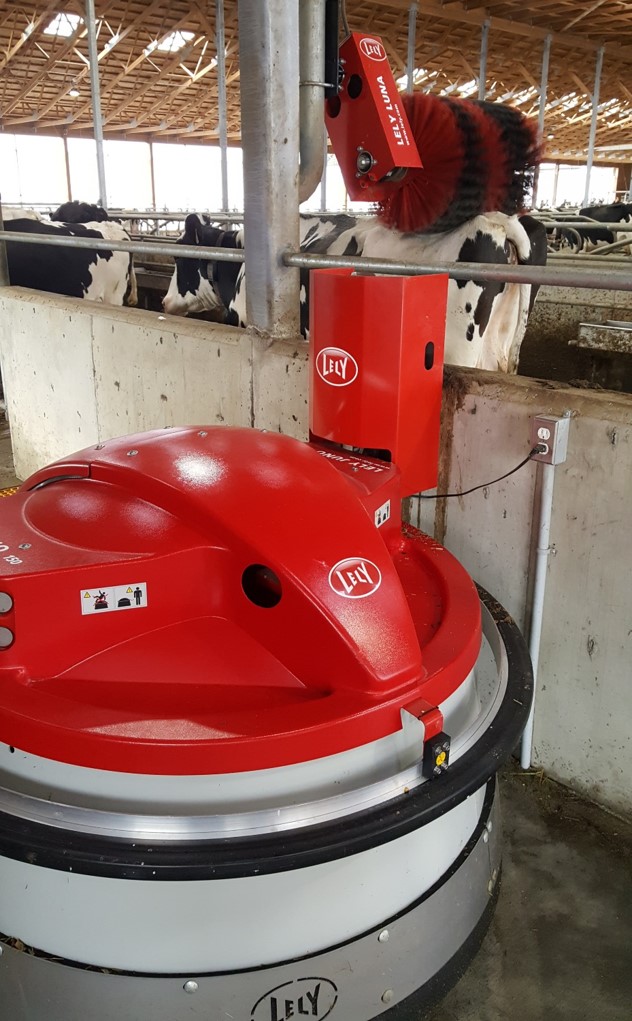
Another welfare-friendly strategy on some farms was to use group housing for their pre-weaned calves. Individual housing is more common due to the idea that this promotes biosecurity and allows for easier monitoring of calf performance. However, automatic calf feeding machines now provide the ability to record how much individual calves eat and drink. In addition, research by the UBC Animal Welfare Program has shown that group housing improves both cognitive performance and feed intake in calves.
Interestingly, one dairy provided hay for its pre-weaned calves. This practice is uncommon based on the idea that consuming forage displaces grain-based calf starter, resulting in reduced energy intake and growth. However, research at UBC suggests that eating forage improves rumen development in calves. One research topic I may explore during my postdoc at UBC will be to look at how important access to roughage is from a behavioral perspective, similar to the work I did with beef heifers at UC Davis.
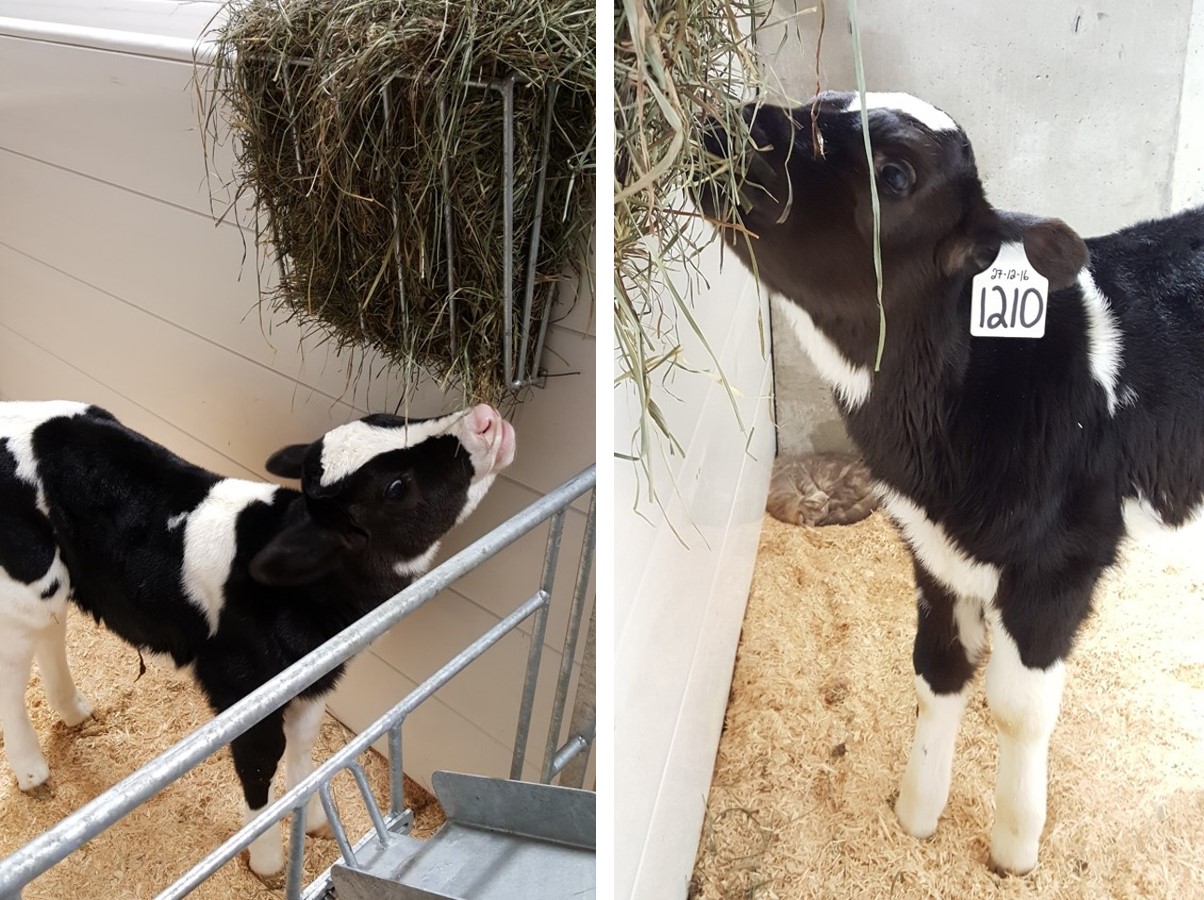
In addition, the avoidance distance was in general very low on the farms I visited. This measure refers to how close cows will let people get to them before they move away. It can be an indication of how comfortable they are with humans and may indirectly reflect how they have been treated.
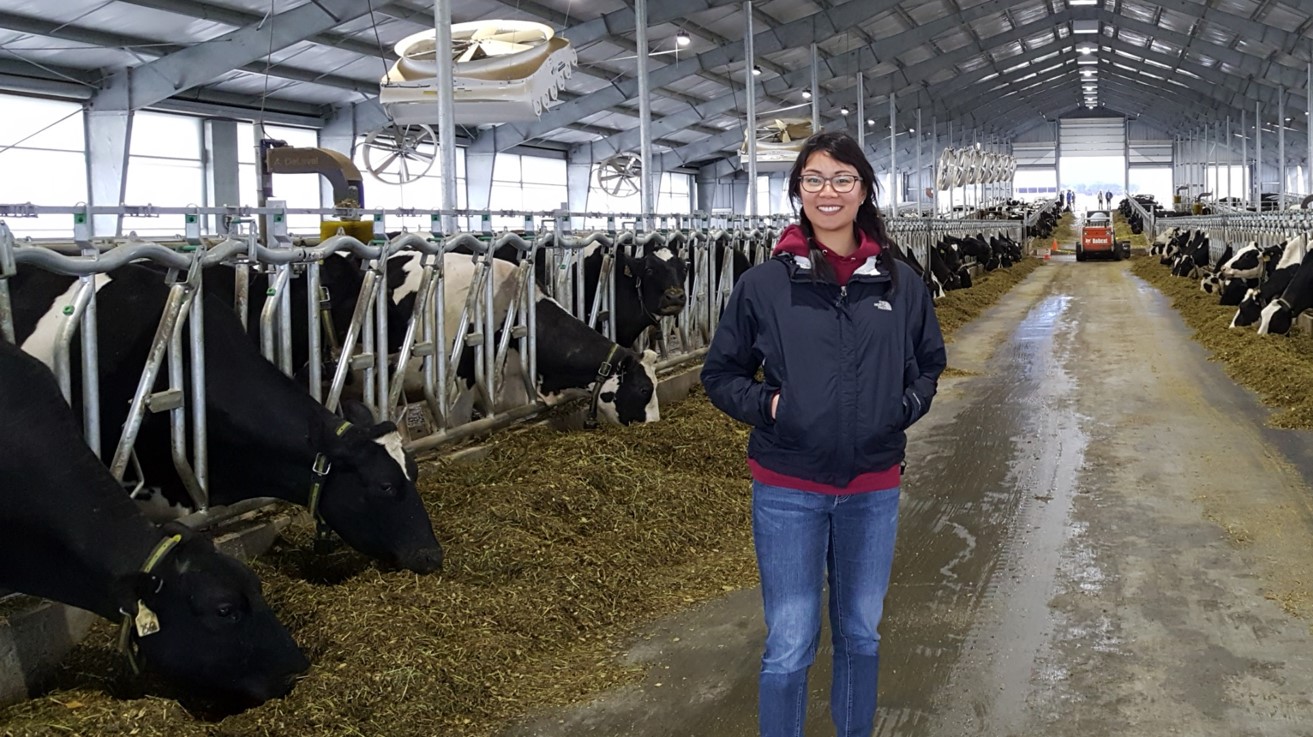
All in all, it was a very interesting and informative day, and I was really grateful to the B.C. producers for opening up their farms to visitors!
This article was posted in Uncategorized.